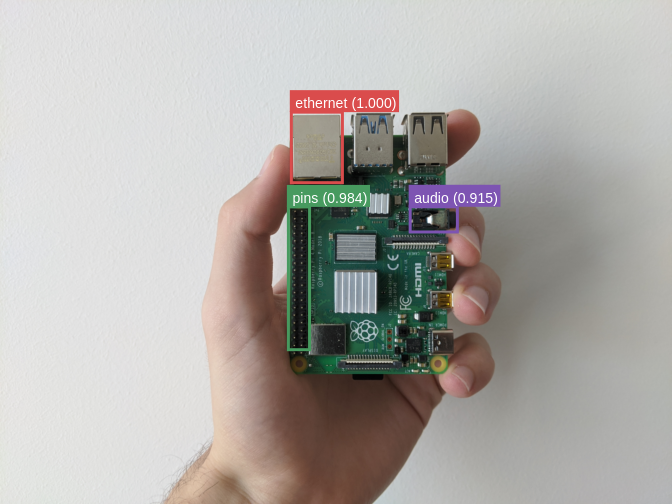In this article we go through how we trained a computer vision model (AI) to detect sub-components of a Raspberry PI using only synthetic data (CGI).
Training with synthetic data is an increasingly popular way to quench the thirst of data hungry deep learning models. The datasets used for this project are available for free at app.zumolabs.ai [1]. We want to make using synthetic data easy for everyone and plan to release more datasets in the future.
The Problem
The Raspberry Pi is a single-board computer very popular with hobbyists. Our goal was to detect some of the sub-components that sit on the board: the pin connectors, the audio jack, and the ethernet port. Though this is a toy problem, it is not far from what you see in the real world — where automating component and defect detection using computer vision can improve the speed and reliability of manufacturing.
The Data
To generate synthetic data, we first need a 3D model of the object. Luckily, in today’s world, most objects already exist in the virtual world. Asset aggregation sites like SketchFab, TurboSquid, or Thangs, have commoditized 3D models [2]. Tip for the wise: if you can’t find a model on the internet, try contacting the manufacturer directly, or scan and model the object yourself.
#data-science
